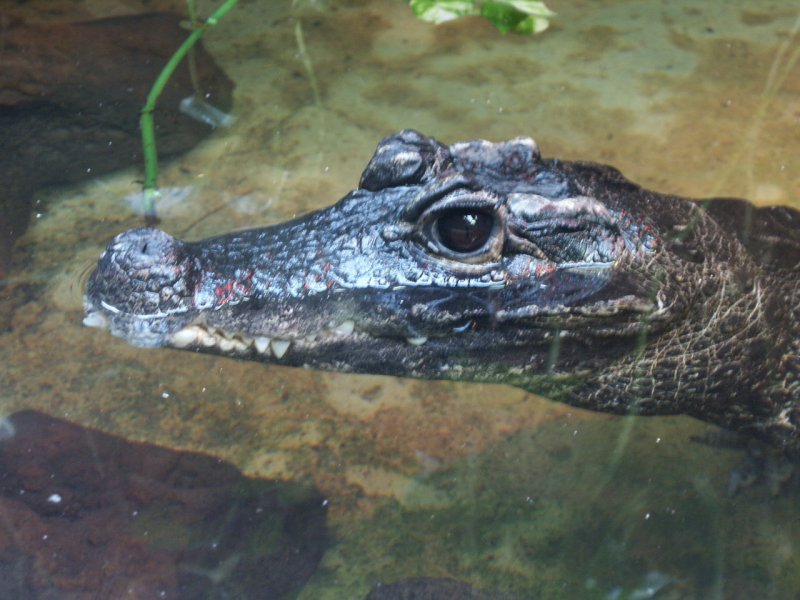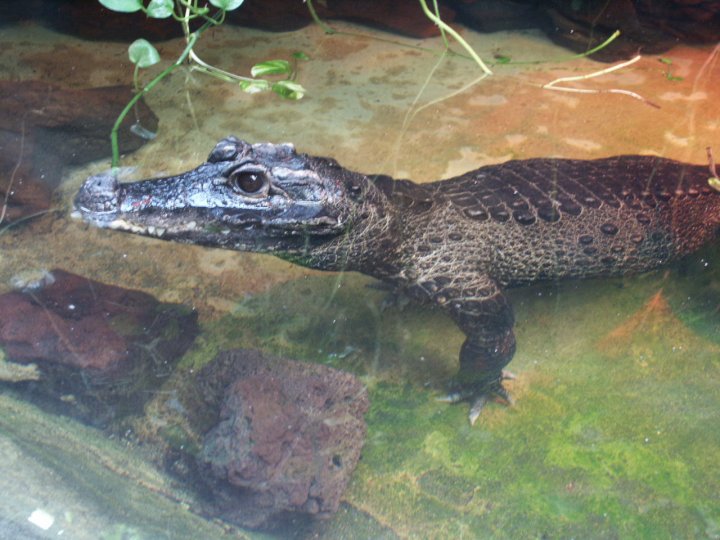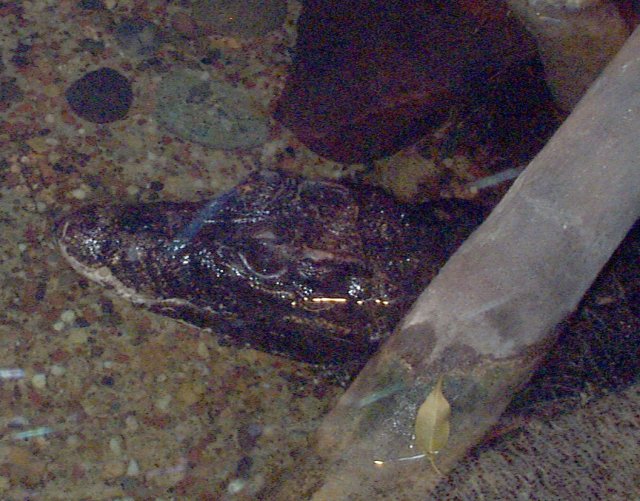| Special anatomical, physiological or behavioral
adaptations: Crocodilians are carnivores and are nocturnal that
is, mostly active at night. During the day they often lie at the water's
edge in large numbers, sunning themselves. At night they retreat to the
water, where they live solitary lives and establish individual
territories.
Crocodiles and alligators are most at home in the water but are able to
travel on land by sliding on their bellies, stepping along with their legs
extended, or galloping awkwardly. Large adults can stay underwater for
over an hour without breathing. They swim primarily by snakelike movements
of their bodies and by powerful strokes of their muscular, oarlike tails,
which are also effective weapons.
A crocodile can also open its mouth when in the water due to a special
valve in its throat. It allows the jaws to open without allowing water to
move down the throat. When crocodiles float in the water, they leave only
their nostrils, eyes, and ears above the surface. Their eyes can be
covered with semitransparent membranes, much like a third eyelid and the
ears and nostrils can be closed over by folds of skin.
Young crocodiles eat worms and insects. As they mature, they add frogs,
tadpoles, and fishes to their diets. Older crocodilians nocturnal
and solitary and they feed on other vertebrate animals as well as
fish. The dwarf crocodile kills its prey and devours it immediately.
Usually with crocodilians animals that are too large to be swallowed whole
are either torn to pieces or are drowned and permitted to decay in
burrows.
The dwarf crocodile forms a land home by burrowing with its paws.
The dwelling has only two passageways; one for entering and one for
exiting. These burrows, which are dug at or just above the
waterline, can extend for many feet and eventually end in a den, or
chamber. The alligators hibernate in these burrows during cold weather.
The dwarf crocodile female usually lays a clutch of less than 20 eggs. The
eggs are placed in a mound of vegetation the female will assemble. The
female will guard the nest and raise the
young. |



